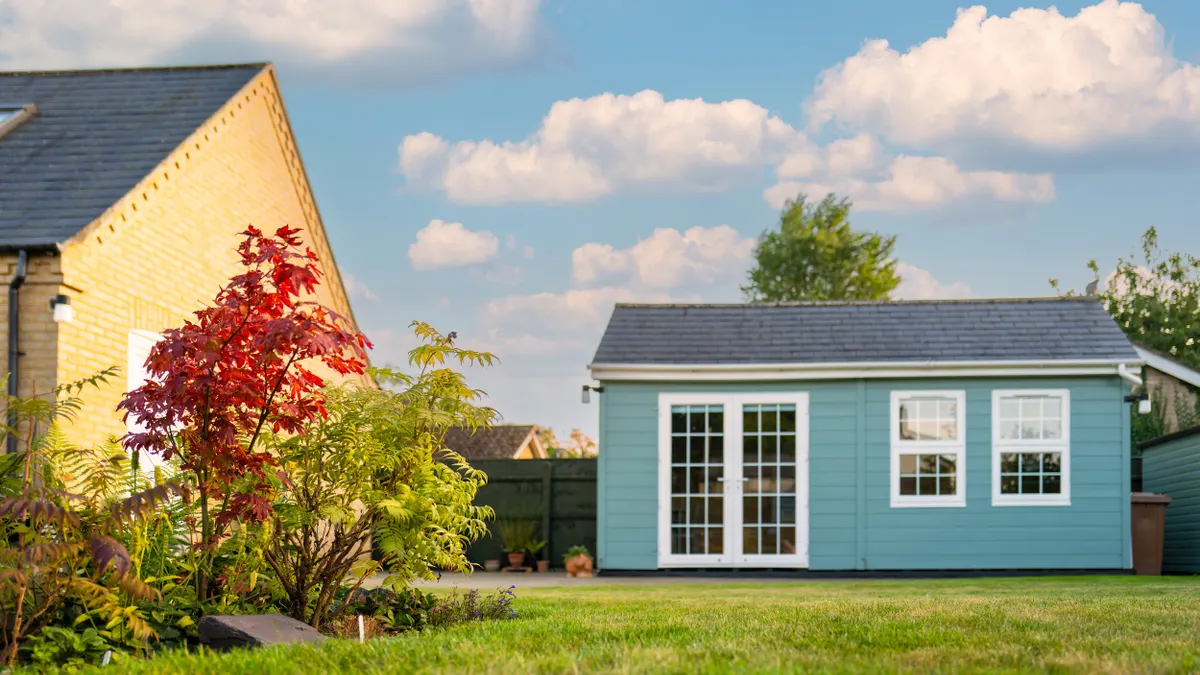Dive Brief:
- Iowa Gov. Kim Reynolds signed a law May 1 that will require the state’s cities and counties to lift restrictions on accessory dwelling units on lots zoned for single-family housing.
- The ordinance, which goes into effect July 1, requires that counties allow a minimum of one unit per lot that’s up to 1,000 square feet or 50% of the size of the single-family home on the property, whichever is larger.
- Iowa joins a growing number of states that have lifted or are considering lifting restrictions on ADUs in recent years, among them Hawai’i, California, Washington, Oregon, Utah, Montana, Vermont, New Hampshire, Connecticut, Maine and Rhode Island, according to a 2024 Harvard study.
Dive Insight:
Accessory dwelling units, also known as ADUs or granny flats, are additional residences that can accompany a larger dwelling, often a single-family home, on a residential lot. ADUs are considered an “up-and-coming” way to address housing shortages across the country, according to a blog post from Iowa Realtors.
However, city and county zoning regulations that restrict the density of areas that are not zoned for multifamily development can stifle the construction of ADUs, according to the National Apartment Association, which represents the rental housing industry. Since 2016, at least 10 states have passed laws to reduce ADU restrictions in cities and counties, a September 2024 report from the Harvard Joint Center for Housing Studies found.
“Historically, neighborhoods and cities have objected to the introduction of ADUs and have thus written their prohibition into the zoning code,” the NAA article states. “[By] reconsidering these zoning restrictions and allowing for ADUs, cities can offer households of all income levels with quality housing.”
The NAA article points to California, which saw a 15,344% surge in ADU building permits from 2016 to 2022 following legislation lifting many zoning restrictions on them in municipalities across the state. In 2022 alone, ADUs were 18% of total new residential construction in California, according to the Urban Institute.
A survey of California homeowners with ADUs conducted by OnePoll in 2023 found that 46% built them for short-term and long-term rentals. Further, whereas 68% said they built an ADU to expand the square footage of their homes, 56% of that group said the ADU housed friends and family.
Just how effective ADUs are at easing the housing affordability crisis in the U.S. remains unclear, however, as there is no uniform method for tracking ADUs, according to JCHS. And despite California’s efforts to pave the way for ADUs and reduce restrictions in recent years, homelessness continued to rise in the state in 2024, albeit at a slower pace than it increased nationally.
The ADU effort also has its detractors. As the author of JCHS’ report wrote on the center’s blog, ADUs “can be politically contentious, especially when they are used in neighborhoods where zoning codes make it challenging to convert single-family homes into multifamily dwellings.” In Colorado, state laws introducing housing reforms, including lifting some ADU restrictions in cities and counties, were recently met with pushback from several localities in the state that has since resulted in a lawsuit.












